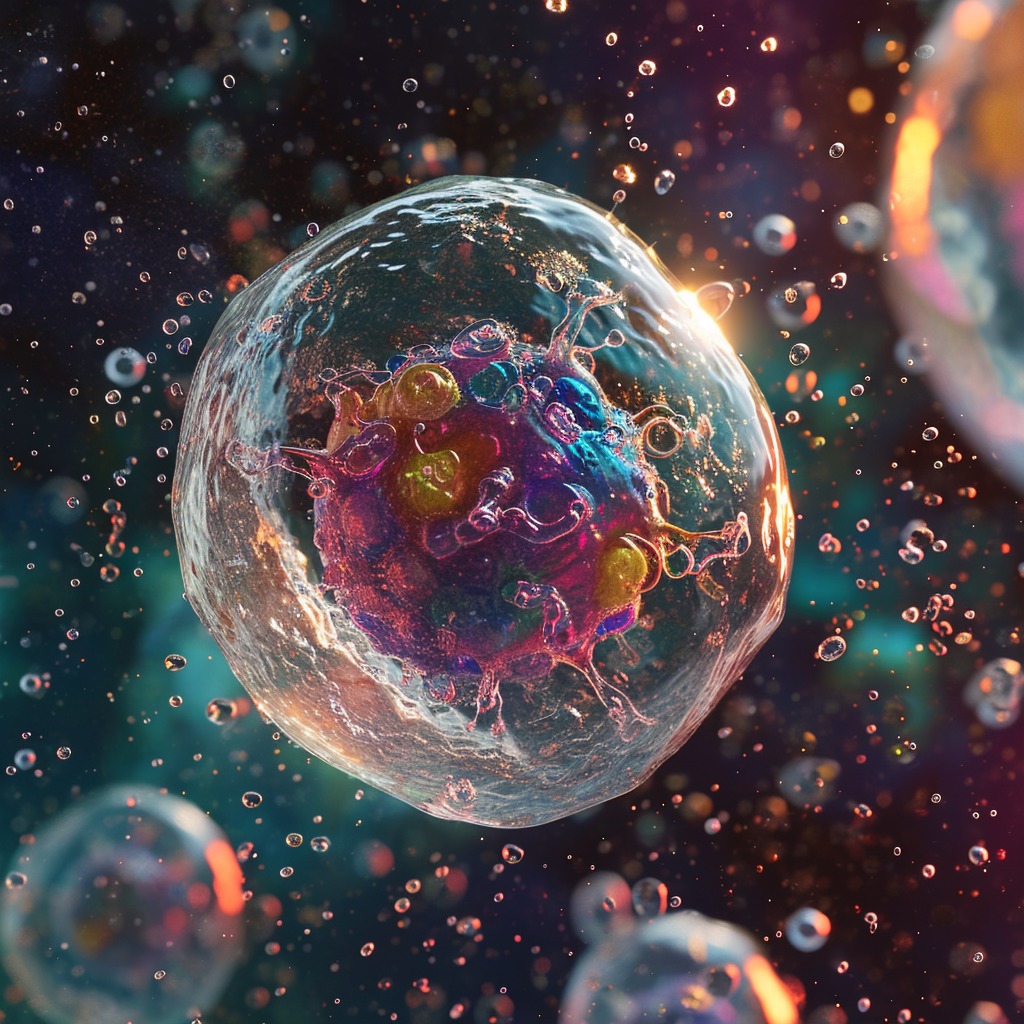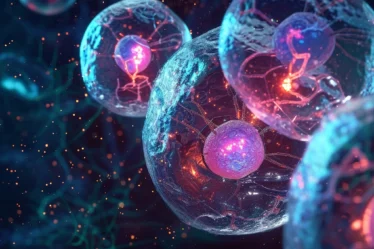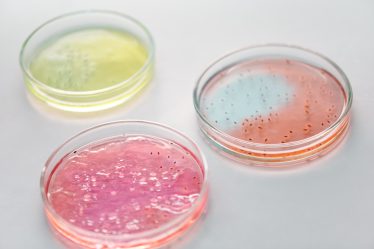
Isotonic and Hypertonic Solutions: What They Are and How They Affect Cells
Have you ever considered what keeps our cells happy and healthy? Our journey through isotonic and hypertonic solutions reveals just that.
Isotonic and hypertonic solutions are super important in how cells live and thrive. An isotonic solution is like a cell’s comfort zone, where solute levels are just right, keeping the cell’s size and water content steady. In contrast, a hypertonic solution is more challenging: it has higher solute levels outside the cell, leading to water moving out and the cell shrinking.
In this blog, you’ll learn how these solutions differ in solute and solvent concentrations and how connected osmosis and hypertonic solutions are. You’ll also discover how isotonic and hypertonic solutions are relevant for biology and health and how to measure and compare their concentration and tonicity.
Don’t stop now; there’s more to learn!
Are you finding these concepts tricky? A biochemistry tutor can guide you through the maze of reactions, from understanding hyper vs hypo to tackling osmosis and diffusion. They provide personalized lessons tailored to your needs, making biochemistry understandable and enjoyable.
Isotonic and Hypertonic Solutions: Key takeaways
In a hurry? Don’t worry. Our critical takeaways on isotonic and hypertonic solutions will give you a quick and easy summary of the main points:
🟠 Isotonic Solutions: Balance solute levels inside and outside cells, crucial for cell volume and health, used in physiological saline and sports drinks.
🟠 Hypertonic Solutions: Higher external solute concentration leads to cell shrinkage, which is significant in studying osmosis and cell health.
🟠 Understanding Tonicity: Grasping tonicity is vital in differentiating isotonic, hypotonic, and hypertonic solutions, with implications in biology, medicine, and daily life.
If you find hypertonic v hypotonic challenging, don’t worry! Personalized tutoring or interactive biochemistry lessons make these concepts more straightforward. Explore more learning topics and broaden your knowledge with our free World of Chemistry blogs.
Learn the Basics of Isotonic and Hypertonic Solutions
An isotonic solution is where the concentration of solutes (substances dissolved in a liquid) outside the cell equals the concentration inside the cell. This balance means that the amount of water entering and leaving the cell is the same, keeping the cell’s size constant.
On the other hand, a hypertonic solution has a higher solute concentration outside the cell than inside. This difference in concentration can lead to water moving out of the cell, causing it to shrink.
Osmosis is a critical process here. It’s the movement of water across a semipermeable membrane (like a cell’s outer layer) from an area of low solute concentration to an area of high concentration. Osmosis aims to balance solute concentrations on both sides of the membrane.
The concept of tonicity relates to the ability of an outside solution to affect the fluid volume inside a cell. Isotonic solutions keep the cell’s size stable, while hypertonic solutions cause cells to shrink.
You might come across isotonic solutions when using certain medical fluids or sports drinks designed to match the body’s natural solute concentration. Hypertonic solutions are found in saltwater or specific medical applications to reduce swelling.
Anyone curious about biology and chemistry in daily life can explore simple experiments or consult a private tutor to discover more about the science behind these everyday phenomena. Search for “biology tutor near me” or “biology tutoring near me”. You could also try searching for “biochemistry classes near me”.
Isotonic Solutions: When the Concentration is Balanced
Isotonic solutions are vital for the health and function of cells and organisms. They are solutions with the same solute concentration as the cells they surround. In this section, you’ll learn what isotonic solutions are, how they are related to osmosis, diffusion, and tonicity, and how they affect the water balance and function of cells.
What is an Isotonic Solution?
An isotonic solution is a fascinating concept in chemistry and biology. It’s where the solute concentration outside the cell equals the concentration inside. This balance means water moves in and out of the cell at the same rate, maintaining the cell’s volume and stability. Isotonic solutions are crucial for cells because they provide an environment that does not alter their natural state, avoiding cell damage or stress.
How are Isotonic Solutions Used in Medicine?
In the medical field, isotonic solutions play a vital role. One typical example is physiological saline, a solution of salt in water that has the same concentration of solutes as human blood. It’s often used to treat dehydration, blood loss, and infections. These solutions ensure that cells in the body aren’t subjected to unnecessary stress from fluid imbalance, making them ideal for intravenous therapy and wound cleaning.
How are Isotonic Solutions Used in Sports?
In the world of sports, isotonic solutions are a game changer. These solutions, often found in sports drinks, are tailored to replenish water, electrolytes, and carbohydrates lost during intense physical activity. They provide hydration and energy without causing an imbalance in the body’s fluid levels, making them perfect for athletes who need to maintain peak performance without stressing their cells.
What are Some Examples of Isotonic Solutions?
Several everyday examples demonstrate the importance of isotonic solutions. Apart from physiological saline used in medicine, sports drinks for athletes are also isotonic. These drinks are formulated to maintain cell volume and fluid balance, ensuring that cells are neither swollen nor shrunk. This balance is crucial for maintaining optimal cell function and overall body health.
Suppose you’re on the lookout for a biology tutor. In that case, a simple search like “biology tutor Liverpool” or “biology teacher Edinburgh” on platforms like meet’n’learn can help you find the right private teacher for your needs.
Those who prefer group learning environments can easily find chemistry classes nearby by searching for “biology classes Leeds” or “biochemistry lessons London” online. This will lead you to local schools or educational centers.
How to Measure and Compare the Concentration of Solutions
What is Tonicity, and How Does it Relate to Concentration?
Tonicity is crucial in understanding the concentration of solutions in biology. It specifically relates to solutions’ isotonic hypotonic hypertonic nature and their impact on cell volume. While tonicity defines how a solution affects a cell, concentration refers to the amount of solute in a given volume of solvent. Tonicity significantly influences the movement of water and solutes across cell membranes through osmosis.
What are the Methods and Units Used to Measure Concentration?
Several methods and units are used to measure the concentration of solutions. Standard units include molarity and molality, which provide a way to express solution concentration quantitatively. Understanding how to find solution concentration involves using techniques such as titration and spectrophotometry, each suitable for different types of solutions.
What are the Factors that Affect the Concentration and Tonicity of Solutions?
Factors affecting the concentration and tonicity of solutions include diffusion, osmotic pressure, and water potential. These factors play a significant role in biology and chemistry, influencing how substances move in and out of cells and solutions. Diffusion is the movement of particles from a high to a low concentration area. At the same time, osmotic pressure and water potential are vital in determining the direction and magnitude of water movement.
How to Calculate and Compare the Concentration and Tonicity of Solutions?
Calculating and comparing the concentration and tonicity involves understanding formulas and specific steps. For instance, calculating the osmolarity of a solution helps compare its tonicity to others. This process is crucial in fields like healthcare and environmental studies, where knowing solutions’ concentration and tonicity can inform critical decisions.
How to Learn: Isotonic Hypotonic Hypertonic
Our dive into isotonic, hypotonic, hypertonic solutions sheds light on the delicate balance cells maintain to function optimally. Isotonic solutions offer them a comfortable environment, akin to us having just what we need. Hypertonic solutions, on the other hand, put cells under stress, somewhat like how we feel under unexpected pressure. It’s a simple yet profound insight into the cellular world that parallels our experiences.
Are you struggling to grasp isotonic hypotonic hypertonic? A biology tutor or hands-on biochemistry lessons can make a big difference in turning these complex ideas into something you can easily understand and use.
Ethanol and Alcohols in chemistry, Fermentation, and how Beer is Made.
Isotonic and Hypertonic Solutions: Frequently Asked Questions
1. What is the difference between isotonic and hypertonic solutions?
An isotonic solution has the same concentration of solutes as the cell, while a hypertonic solution has a higher concentration of solutes than the cell.
2. What is the effect of hypertonic solutions on cells?
Hypertonic solutions cause water to move out of the cells by osmosis, resulting in the cells shrinking or shriveling.
3. What are some examples of hypertonic solutions in biology and health?
Some examples of hypertonic solutions in biology and health are seawater, honey, concentrated salt solutions, and intravenous fluids. These solutions can cause dehydration, plasmolysis, crenation, or hemolysis of cells.
4. What are some examples of isotonic solutions in biology and health?
Some examples of isotonic solutions in biology and health are blood plasma, normal saline, lactated Ringer’s solution, and sports drinks. These solutions can maintain the cell volume and fluid balance.
5. What is the difference between solute and solvent?
A solute is a substance that is dissolved in a solvent, while a solvent is a substance that dissolves a solute. For example, salt is the solute in a salt solution, and water is the solvent.
6. What is the difference between osmosis and diffusion?
Osmosis is water movement across a semipermeable membrane from a region of lower solute concentration to an area of higher solute concentration. In comparison, diffusion is the movement of solutes or other molecules from a higher concentration region to a lower concentration.
7. What is tonicity, and how does it relate to isotonic and hypertonic solutions?
Tonicity is a measure of the ability of a solution to cause water movement across a membrane by osmosis. A solution can be isotonic, hypotonic, or hypertonic to a cell, depending on whether its tonicity is equal to, lower than, or higher than the cell’s tonicity.
8. How can the concentration and tonicity of solutions be measured and compared?
The concentration and tonicity of solutions can be measured and compared using different methods and units, such as molarity, molality, osmolarity, osmolality, and water potential. These methods and units can be used to calculate and compare the amount of solutes and solvents in a solution and their effect on osmosis.
Are you interested in other subjects? Read top free study guides for Biology, English, French, and Music.
References:
1. Khan Academy
2. Dictionary
3. Wikipedia



